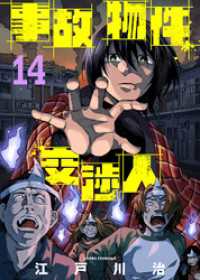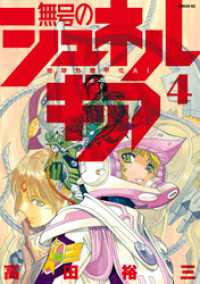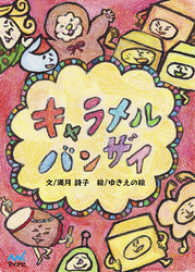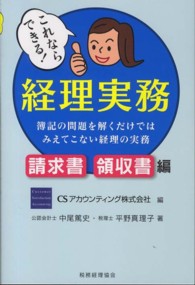- ホーム
- > 洋書
- > 英文書
- > History / World
基本説明
This is a most important new work of Japanese scholarship on Emperor Hirohito, the English edition having been long delayed following the untimely death of distinguished American historian Marius B. Jansen (Emeritus Professor, Princeton) in December 2000, who had been actively collaborating with David Noble in the translation of Hata Ikuhiko's original study in Japanese, first published in 1984. In his extended Foreword as editor, Jansen states; 'We are left with puzzles that will probably never be resolved. Clearly, as Professor Hata and others have shown, the Emperor Hirohito had immense power, but the condition of retaining it was judicious restraint in exercising it.' Jansen added substantive notes to help place the author's material in historical and historiographical perspective.
Full Description
This is a most important new work on Emperor Hirohito by one of Japan's leading historians, Ikuhiko Hata. Following the untimely death of Marius B. Jansen (Emeritus Professor, University of Princeton) in December 2000, who had been actively collaborating with the author and translator of the original Japanese edition (Hirohito Tenno itsutsu no ketsudan, first published in 1987 and republished in 1994), it was inevitable that there would be a delay in publication of the English edition, which is finally now available. In his extended Foreword as editor, referring to the nature of Hirohito's power, Jansen states: 'We are left with puzzles that will probably never be resolved. Clearly, as Professor Hata and others have shown, the Emperor Hirohito had immense power, but the condition of retaining it was judicious restraint in exercising it.' In offering a view on the merits of Hata's research, Jansen points to the hitherto unknown plots (in parallel but unrelated) by both the Army and Navy to preserve, and if necessary resuscitate, the imperial line in the event the victors decided to depose Hirohito. Jansen also points to the merits of Hata's particular focus on the contribution Hirohito made to Japan in its post-war relations with the United States. Jansen added substantive notes to help place the author's material in historical and historiographical perspective. The book, which is not a biography or a general history of the Showa era, focuses on five decisions taken by Emperor Hirohito, which the author considers the key turning points of his reign: these concern the 26 February 1936 insurrection of young army officers, the termination of the Pacific War, the post-war constitution, the issue of abdication and the San Francisco Peace Treaty.
Contents
The Author and the Book; Editor's Preface; Author's Preface to the English Edition; Chapter 1: Emperor Hirohito and the February 26 Army Uprising; Chapter 2: The Decision to End the War; Chapter 3: Schemes for Survival of the Imperial Line; Chapter 4: One Thousand Letters that Saved the Emperor; Chapter 5: Emperor Hirohito is Not to Abdicate; Chapter 6: The Emperor Hirohito in War and Peace - Confrontation with MacArthur; Index








